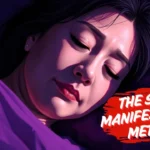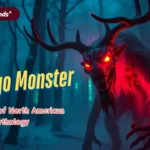Ever heard about Irish folklore banshee ghost? A banshee is a supernatural entity from Gaelic Celtic folklore, often depicted as a woman who shrieks or sings.
Typically this ghost is linked to specific families, banshees serve as omens, warning of an impending death within a household.
In Irish tradition, the banshee is thought to be a remnant of the Tuatha Dé Danann, the ancient gods of Ireland who were ultimately defeated and forced underground by the Milesians, who symbolized the arrival of Celtic culture in Ireland.
Each member of the Tuatha Dé Danann is believed to have taken residence in a mound or hill known as a sídhe. Explore more about irish folklore banshee ghost and urban legend.
Consequently, these once-deities became known as the aes sídhe (modern: aos sí, meaning “people of the hills”) and were transformed into fairy-like beings.

The Banshee, a prominent figure in Irish folklore, is recognized as a harbinger of death and a messenger from the Otherworld.
Often portrayed as a wailing spirit or a sorrowful woman, the Banshee’s haunting cries are said to predict the death of a family member.
This mysterious and mournful figure encapsulates themes of mortality, grief, and the supernatural, deeply embedded in Celtic tradition and myth.
Ghost in Irish folklore banshee
A banshee, known as the “woman of the fairies,” is a supernatural being found in Irish and other Celtic folklore. There are several urban legend and myth roaming around irish folklore banshee ghost.
Her mournful “keening,” which is a wailing or lamentation heard at night, was thought to signal the impending death of a family member for anyone who heard her.
In Ireland, it was believed that banshees only warned families of pure Irish descent.
The Welsh equivalent, the gwrach y Rhibyn, or “witch of Rhibyn,” was said to visit only families with old Welsh lineage.
Scottish novelist Sir Walter Scott referenced the belief in a type of banshee or household spirit among certain Highland families in his work, Letters on Demonology and Witchcraft, published in 1830.
Misconception about Irish Ghost Banshee
Despite her important role, there are several misconceptions about the Irish folklore banshee spirit:
Purely Malevolent: While she is frequently portrayed as a terrifying figure, her narrative also encompasses themes of sorrow and mourning.
This misunderstanding ignores her function as a compassionate messenger who alerts families to impending death, giving them a chance to prepare for their loss.
Always Visible: Although she is often shown as a wailing woman, her presence can sometimes be felt rather than seen.
Her cries serve as her main form of communication, highlighting her ethereal and elusive nature. In other irish folklore banshee have different form of communication with people near death.
Read : Demon Agares Unique power and abilities from the World of Ars Goetia 2 Powerful Ritual Guide
Ghost Banshee and their offering

Flowers and Candles: These offerings represent mourning and remembrance. Placing flowers, especially white lilies or heather, along with candles on altars or graves serves to honor the Banshee’s presence.
Silver Items: Objects such as silver jewelry, coins, or charms highlight the Banshee’s ties to protection and the moon. These items can be set on altars or incorporated into rituals to enhance the connection.
Incense and Feathers: Incense symbolizes the element of air and can be used to purify and create a sacred atmosphere. Feathers, particularly from nocturnal birds, reflect the Banshee’s ethereal essence and can be utilized in rituals to call upon her presence.
Ancestral Mementos: Personal belongings or photographs of departed loved ones can be offered to acknowledge the Banshee’s role in linking the living with the dead.
These mementos act as a bridge between realms, inviting the Banshee’s guidance and protection. These offerings not only pay tribute to the irish folklore banshee spirit but also welcome her presence and blessings into one’s life.
Engaging in acts of remembrance and honoring the deceased can be a profound way to connect with her sorrowful energy.
Read : Djall Demon and his 3 unique powers The Devilish Trickster of Albanian Folklore
FAQ
What is a Banshee?
What does a Banshee look like?
Descriptions of the Banshee’s appearance vary across different tales. She is often depicted as a woman with long, flowing hair, sometimes seen combing it. Her attire ranges from a grey cloak over a green dress to a white garment, and her eyes are frequently described as red from incessant weeping. In some accounts, she appears as a young, beautiful woman, while in others, she takes the form of an aged hag.
Why does the Banshee wail?
Is the Banshee considered a ghost or a fairy?
What does it mean if you hear a Banshee’s cry?
Are Banshees malevolent beings?
Do Banshees mourn for specific families?
Traditionally, it is believed that Banshees are attached to particular Irish families, especially those with surnames prefixed by “O'” or “Mac,” indicating Gaelic lineage. However, over time, this belief has expanded, and it’s now thought that Banshees may wail for individuals outside these specific families as well.
What is the origin of the Banshee legend?
The legend of the Banshee likely originates from the Irish custom of keening, where women sang lamentations at funerals. Over time, this practice merged with Irish mythology, leading to the concept of a supernatural being who keens for the dead or dying.
The Banshee remains a captivating figure in Irish folklore, embodying the deep connection between the natural and supernatural realms and reflecting cultural attitudes toward death and mourning.


